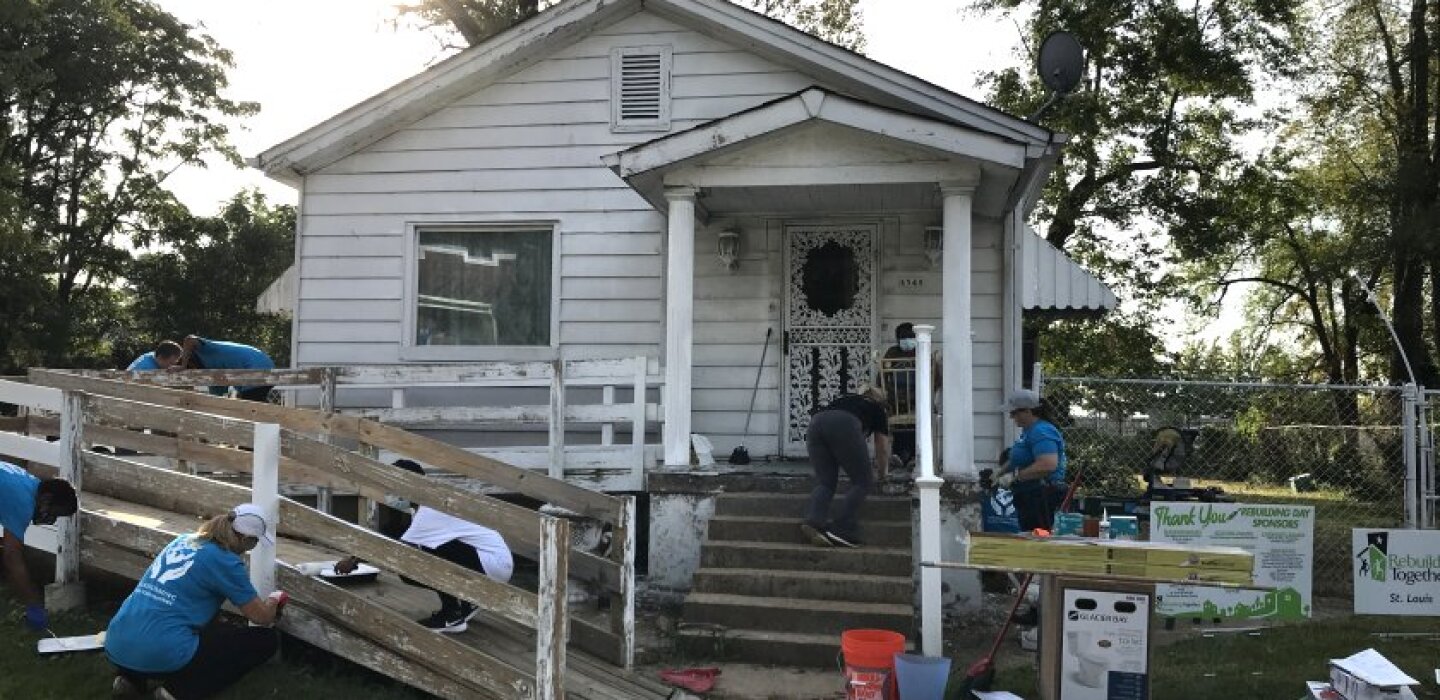
St. Louis Wants to Spend Millions on Flood Mitigation
(TNS) – City officials want to spend millions of federal dollars installing flood basins, wetlands, porous pavement and other projects to prepare for future flooding.
They also want to provide millions of dollars to residents to buy out high-risk properties, repair flood damaged homes and even replace destroyed cars.
The money, almost $26 million in all, is intended to support long-term recovery from local flash flooding sparked by record-shattering rainfall in July 2022.
“We know these things are going to happen again, so we want to be prepared,” said Tom Nagel, a spokesman for the city’s Community Development Administration.
The goal of the city’s proposal, released this month, is twofold. On one hand, it aims to help largely disadvantaged residents recover from the past flood. But it also looks to minimize impacts of future flooding, even as risks rise — thanks to both prevailing trends of urban development that help fuel runoff, and downpours that are intensified by greenhouse gases warming the atmosphere, since hotter air can hold more moisture.
Many flood victims across the region, some of whom were uninsured or underinsured at the time of the event, have faced long, complicated roads to recovery. The city says it currently faces more than $38 million in “unmet needs,” overall, stretching from infrastructure projects to the household level.
In its 104-page “action plan” released on June 5, the city said that it is committed to using the funding, from the U.S. Department of Housing and Urban Development, to “benefit as many residents as possible, with a particular focus on low- and moderate-income individuals and vulnerable populations,” and mapped out a series of specific ways to put the money to work in St. Louis.
The largest chunk of it — $9.8 million, or about 38 percent — would go toward an estimated 10 “green infrastructure” projects, such as catchment basins, rain gardens, pavement that allows water to pass through it, and river restoration. The city’s plan cited an analysis completed for the Federal Emergency Management Agency that found that every dollar spent on “natural hazard mitigation” resulted in $6 of savings on average, by reducing impacts of future disasters.
Meanwhile, the city has proposed using the two next biggest shares of grant funding to address issues tied to housing:
The city aims to use $5.9 million, or 23 percent of the grant money, to support home repair projects for eligible recipients, at up to $50,000 apiece, according to the report. Another $5.4 million, or 21 percent of the grant, seeks to fund voluntary buyouts of homes at a “pre-disaster, fair-market value” of up to $350,000, while converting the given lots into green space, wetlands or other select uses. The buyout-related funding program also aims to offer financial incentives for homeowners to relocate to lower-risk areas within St. Louis.
Housing, the plan says, “is the largest category of unmet need.”
The city’s action plan outlines about $4.7 million in various other uses for its HUD funding. That includes one program that, if approved, would offer up to $25,000 in financial assistance to eligible households facing flood-related losses, such as cars that were destroyed by floodwaters and have still not been replaced.
“A lot of cars were underwater,” said Nagel. “We know tons of cars got ruined.”
The proposal includes almost $1.3 million for administrative costs.
The city’s current plan is “absolutely” subject to change, said Nagel. Its proposals are based on feedback from a public survey conducted earlier this year, as well as an open house and research from a consultant group called ICF.
“Here’s what we heard, so this is what we propose,” said Nagel.
On Thursday and Tuesday, the public will have a chance to voice their thoughts on the plan at in-person and virtual meetings.
Thursday’s public meeting about the proposed plan will be a hybrid event, held at 10 a.m. both virtually and in person at 1520 Market Street. That will be followed by a virtual meeting next week, at 6 p.m. on Tuesday. More information is available on the website of the St. Louis CDA.
In the wake of the public meetings, the city will submit a proposed plan to HUD. The agency must approve that plan before any of the related money can be distributed in St. Louis, which the city aims to begin in the fall.
“The home repair, I’d imagine that will be one of the first rollouts,” said Rashonda Alexander, director of compliance for the St. Louis CDA. “Those infrastructure needs are going to take time.”
Sanjeev Anand of the Post-Dispatch contributed to this report.
©2024 the St. Louis Post-Dispatch Distributed by Tribune Content Agency, LLC.


Average Rating